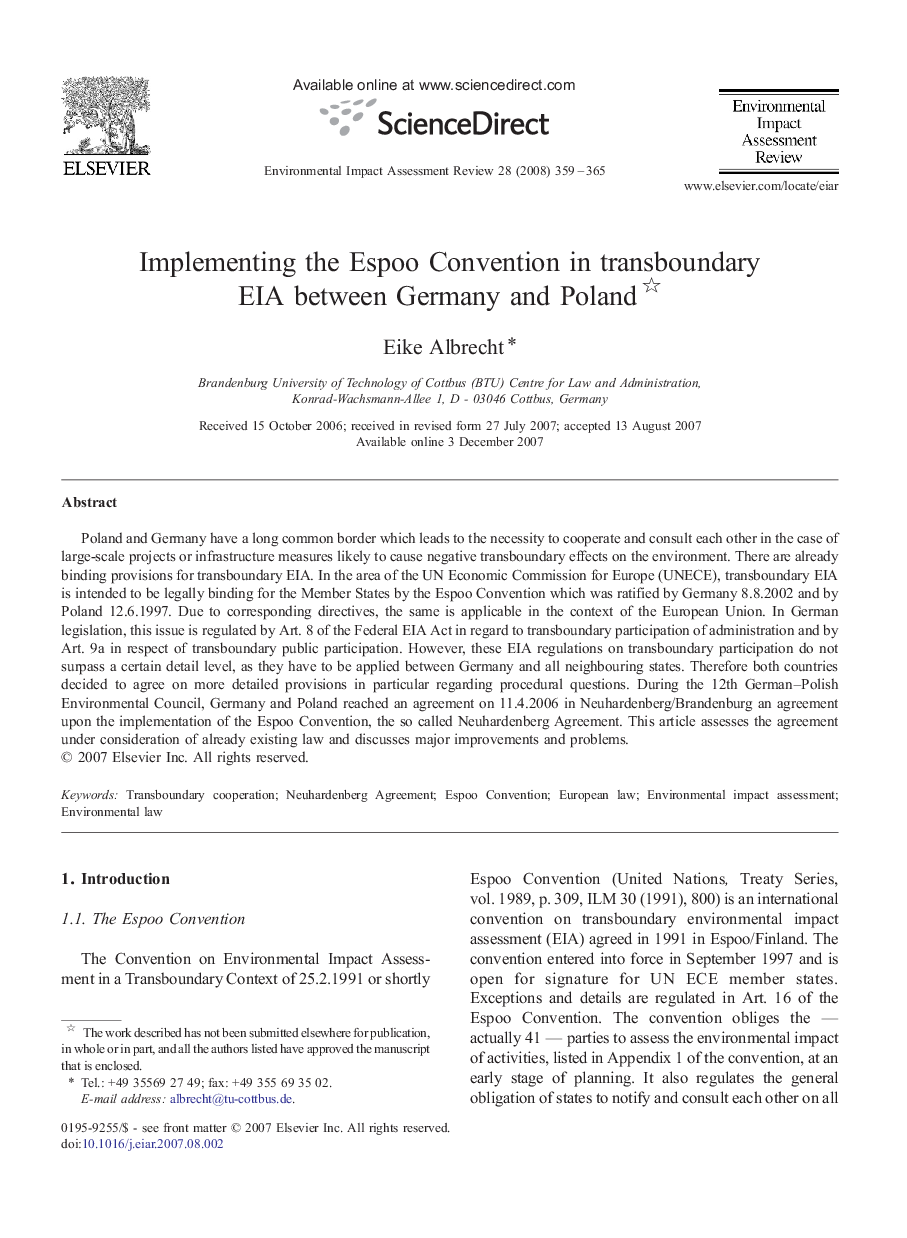| Article ID | Journal | Published Year | Pages | File Type |
|---|---|---|---|---|
| 1052990 | Environmental Impact Assessment Review | 2008 | 7 Pages |
Poland and Germany have a long common border which leads to the necessity to cooperate and consult each other in the case of large-scale projects or infrastructure measures likely to cause negative transboundary effects on the environment. There are already binding provisions for transboundary EIA. In the area of the UN Economic Commission for Europe (UNECE), transboundary EIA is intended to be legally binding for the Member States by the Espoo Convention which was ratified by Germany 8.8.2002 and by Poland 12.6.1997. Due to corresponding directives, the same is applicable in the context of the European Union. In German legislation, this issue is regulated by Art. 8 of the Federal EIA Act in regard to transboundary participation of administration and by Art. 9a in respect of transboundary public participation. However, these EIA regulations on transboundary participation do not surpass a certain detail level, as they have to be applied between Germany and all neighbouring states. Therefore both countries decided to agree on more detailed provisions in particular regarding procedural questions. During the 12th German–Polish Environmental Council, Germany and Poland reached an agreement on 11.4.2006 in Neuhardenberg/Brandenburg an agreement upon the implementation of the Espoo Convention, the so called Neuhardenberg Agreement. This article assesses the agreement under consideration of already existing law and discusses major improvements and problems.
